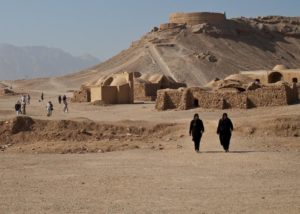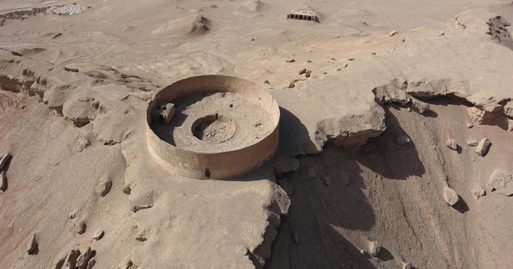
Credit: rebelcircus.com
The tradition of sky burials, in which a human corpse is brought to a mountaintop to decompose by exposure to the elements and carrion birds, is practiced in Mongolia, Tibet, Qinghai, Sichuan, Bhutan and parts of India. The Tibetan sky burial and Mongolian sky burial are practices carried out by adherents to Vajrayana Buddhism, which teaches that spirits transmigrate, or are reborn into other bodies. The body of a person who has died, therefore, is an empty vessel and does not need to be preserved. No disrespect is meant by leaving the body exposed, because the body no longer houses the spirit of the person who died.
These Buddhist practices are believed to date back centuries. But the Zoroastrian practice of exposing the dead predates that. It was first documented by Herodotus in the 5th century BCE. Zoroastrian Towers of Silence, or dakhmas, where bodies were brought to putrefaction plates, evolved out of those exposure practices, and were first documented in the 9th century BC.

Credit: rebelcircus.com
Zoroastrian Towers of Silence have a very different rationale from the Vajryana Buddhist sky burials. The Zoroastrian tradition views a dead body as unclean. The corpse demon, called daeva in Avestan, the language of Zoroastrian scripture, was thought to enter the dead body and contaminate everything it touched.
An ecclesiastical code in Zoroastrian scripture “given against the demons” lays out protocol for getting rid of the body as soon as possible. Zoroastrianism holds that Earth and Fire are sacred, so the body was placed atop a tower out in the desert to avoid coming into contact with and contaminating those elements. Bodies were placed on the Towers of Silence in three concentric circles: men in the outer circle, women in the middle, and children in the inner-most ring. The bodies were then left to the carrion birds and the elements. Once vultures had stripped the body of its flesh and the sun had bleached its bones, the bones would be placed in a central pit at the top of the dakhma to break down.
The most prominent of the Towers of Silence are in Iran, though similar dakhmas exist outside of Mumbai, India. The towers of Yazd, Iran, are no longer used for burial, as the practice was outlawed in Iran in the 1970s. Zoroastrians of Iran have taken to methods such as burying bodies in cement lined coffin to prevent the daeva demon inside the body from contaminating the earth. The Parsi Zorastrians of Mumbai, India, still practice exposure burial with the towers there, though dwindling vulture populations have made things more difficult.

 Zoroastrian Towers of Silence
Zoroastrian Towers of Silence


 “Hand to Earth” by Andy Goldsworthy
“Hand to Earth” by Andy Goldsworthy
 Trans Remembrance Project Provides a Community of Grieving
Trans Remembrance Project Provides a Community of Grieving
 Caring for a Dying Loved One? Be Gentle With Yourself.
Caring for a Dying Loved One? Be Gentle With Yourself.














